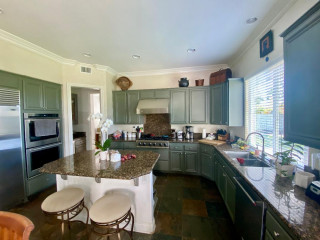
This article was originally published by a www.houzz.com . Read the Original article here. .

This article was originally published by a www.houzz.com . Read the Original article here. .
3. Cozy Fireside LoungePatio at a GlanceWho lives here: Trevor Fulmer, who also designed the space, and his husband, Jim Mattus, a corporate attorneyLocation:…
As holiday hosting ramps up, so does the value of a dedicated dining room. Beyond providing seating for a meal, a dining room sets…
Innovative Design BuildSave Photo5. Make Over Existing CabinetryAs long as you’re satisfied with your kitchen’s layout and your cabinets are sturdy and in good…
5. Cortney Bishop x AmadiCharleston, South Carolina, designer Cortney Bishop has long partnered with Amadi Carpets to create luxurious custom rugs for clients. This…
While interior designers have the creative job of choosing paint colors for a project, it’s the build team who apply them to the walls,…
5. Cortney Bishop x AmadiCharleston, South Carolina, designer Cortney Bishop has long partnered with Amadi Carpets to create luxurious custom rugs for clients. This…
After: Galante replaced the concrete with flagstone and added a fire pit and seating. “We went with a natural palette with the stone and…
What with cleaning, shopping, table setting and all those dishes to cook, pulling off Thanksgiving dinner is a major accomplishment. If you’re planning to…
After: Now the kitchen has a streamlined look with dedicated storage and a refreshing cream-and-blue palette. Gone is the awkward butler’s pantry, replaced by glass-front cabinets for glassware and dishes. To the left of the new paneled fridge, an area that used to be a walk-in pantry now has cabinets for small appliances, bakeware, dry goods and a microwave.
To the right of the stove, a countertop cabinet hides a pullout shelf with a coffee bar and toaster, as well as stationary shelves for mugs and more. To the right of the sink, a cabinet with hammered glass doors keeps more dishware at hand.
Ramsay also removed a dining table and chairs (where the previous photo was taken from) and relocated a desk on the sink-side wall. This allowed for a more spacious island with seating for three, plus French doors that bathe the space in light. Wood-look luxury vinyl flooring grounds the space in beauty and practicality
Perimeter cabinet paint: Dumpling, Sherwin-Williams; island base paint: Hale Navy, Benjamin Moore
Read more about this project